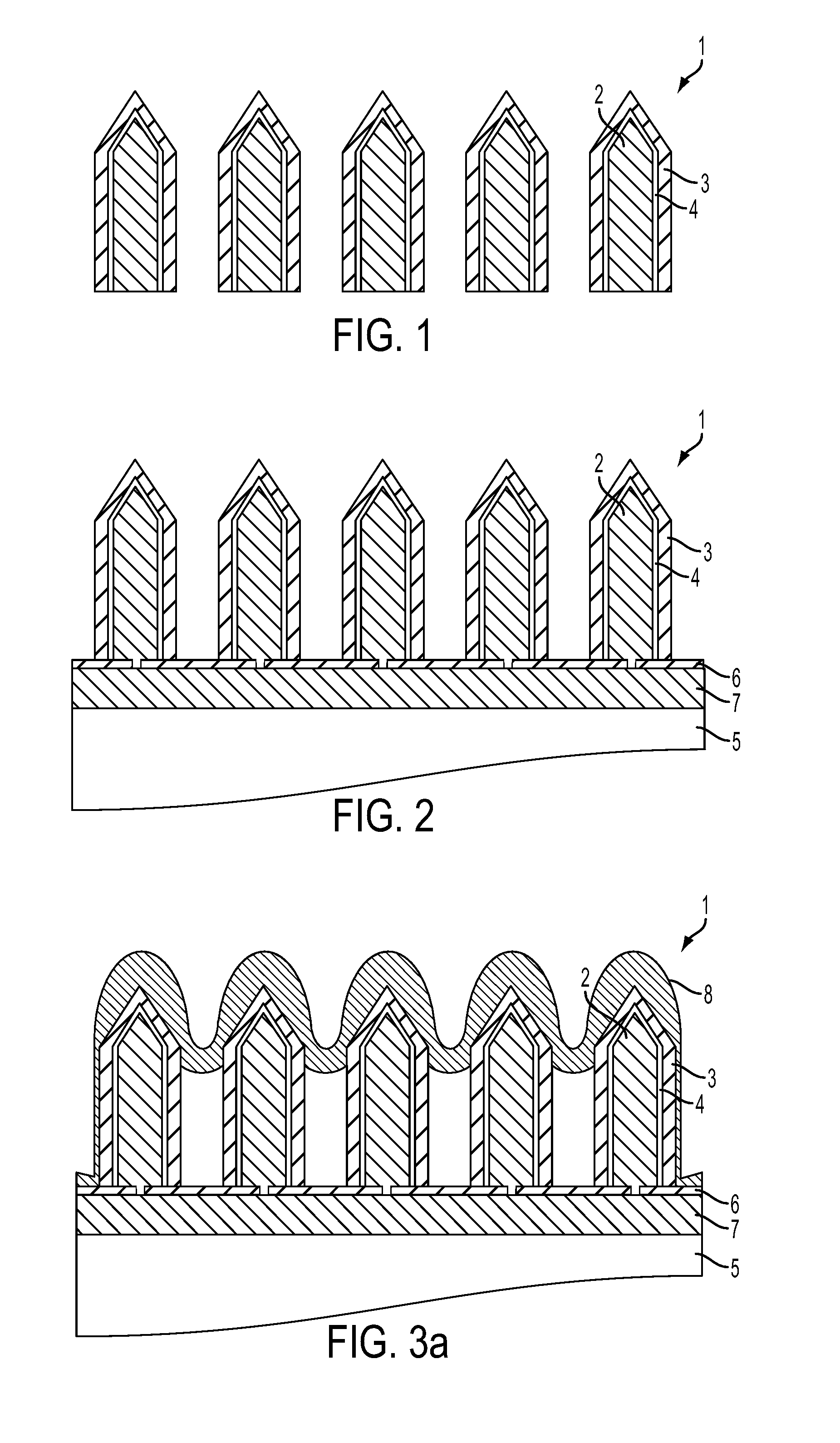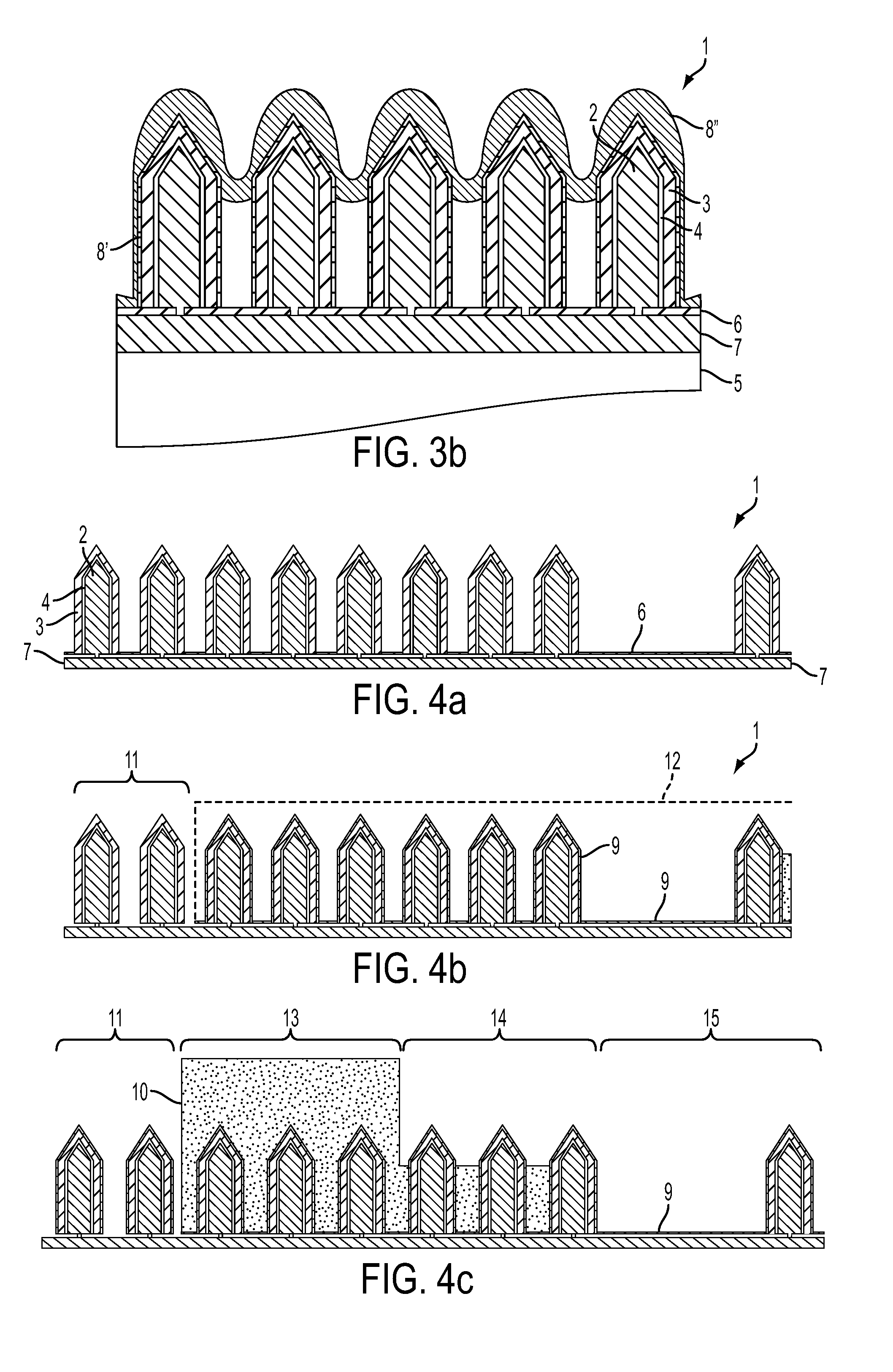Nanowire LED structure and method for manufacturing the same
a technology of light-emitting diodes and nanowires, which is applied in the direction of nanotechnology, electrical equipment, semiconductor devices, etc., can solve the problems of difficult operation of contact material deposition using line-of-sight processes, and achieve the effects of improving lateral current spreading, reducing or eliminating discontinuities, and increasing absorption
- Summary
- Abstract
- Description
- Claims
- Application Information
AI Technical Summary
Benefits of technology
Problems solved by technology
Method used
Image
Examples
second embodiment
[0063]However, in an alternative second embodiment, the p-electrode is provided in a first step and the n-electrode is formed from a different material at a later stage. Such a process is discloses in FIGS. 4i to 4s and will be briefly described below. The description of the same elements and steps from FIGS. 4a-4h will not be repeated below for brevity.
[0064]The first two steps in the second embodiment method are identical to the first embodiment method, i.e. FIGS. 4a and b represent the same steps as FIGS. 4i and j. However, the protective layer 9 and masking layer 6 are not removed in the n-pad area 11FIG. 4j as in FIG. 4b.
first embodiment
[0065]In the next step, a sacrificial (e.g., resist) layer 10a is deposited in two different thicknesses such that no nanowires are left uncovered in the n-pad area 11 as in the Thus, in the left hand side of FIG. 4k it can be seen that the nanowires in area 11 are entirely covered just as the central nanowires in the non-active region 13, as opposed to in FIG. 4c where the leftmost nanowires in n-pad area 11 are completely uncovered. The nanowires in the LED area 14 are partially exposed on the top in the photoresist 10a. The p-pad area 15 is completely exposed in photoresist pattern 10a.
[0066]FIG. 4l shows that the protective layer 9 is at least partially removed from the exposed nanowire tips in LED area 13 in order to provide for contact between the p-shell 3 of the nanowires in area 13 and the p-electrode.
[0067]The p-electrode layer 16 is then deposited as shown in FIG. 4m. Layer 16 covers the entire structure. The inactive 13 and n-contact 11 areas are now covered by the pho...
PUM
 Login to View More
Login to View More Abstract
Description
Claims
Application Information
 Login to View More
Login to View More - R&D
- Intellectual Property
- Life Sciences
- Materials
- Tech Scout
- Unparalleled Data Quality
- Higher Quality Content
- 60% Fewer Hallucinations
Browse by: Latest US Patents, China's latest patents, Technical Efficacy Thesaurus, Application Domain, Technology Topic, Popular Technical Reports.
© 2025 PatSnap. All rights reserved.Legal|Privacy policy|Modern Slavery Act Transparency Statement|Sitemap|About US| Contact US: help@patsnap.com



